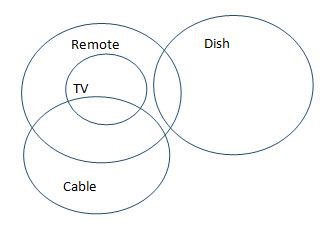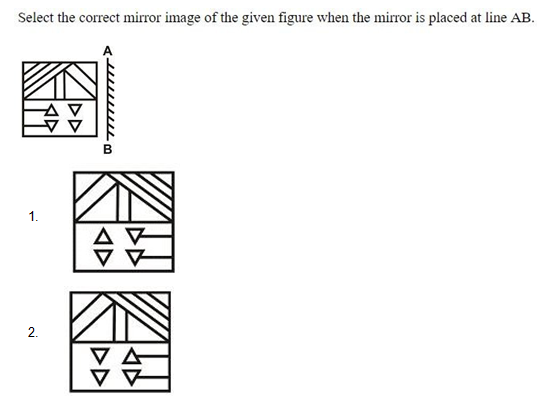Question
Statements: All TV is remote Some remote
is Dish Some Cable is TV Conclusions: I. Some remote is TV II. Some dish is TV III. All cable is remote In each question below are given some statements followed by some conclusions numbered I, II, etc are given. You have to take the given statements to be true even if they seem to be at variance with commonly known facts and then decide which of the given conclusions logically follows from the given statements, disregarding commonly known facts.Solution
All TV is remote(A) ⇒ Conversion ⇒ Some remote is TV. Hence conclusion I follows. All TV is remote(A) + Some remote is Dish(I) ⇒ No conclusion. Hence conclusion II does not follow. Some Cable is TV(I) + All TV is remote(A) ⇒ Some cable is remote(I). Hence conclusion III does not follow. Minimal possibilities: 
The following Venn diagram shows Men's profession as Doctors and Chess Players.
RN 12 is related to PL 16 in a certain way. In the same way, EJ 17 is related to CH 21. To which of the following is FL 15 related to following the same...
The sequence of folding a piece of paper and the manner in which the folded paper has been cut is shown below. Choose a figure which would most closely ...
In a certain code language, ‘pistachio healthy nut’ is coded as ‘tu hy si’ and ‘coffee healthy drink’ is coded as ‘hy xe ph’. How is ‘...
Select the correct combination of mathematical signs to sequentially replace the * signs and balance the given equation.
65 * 56 * 8 * 19 * 2 * 34
P is the father of S, whose mother is Q. R is the sister of Q. What does P's father-in-law have to relate to R's husband?

Choose the next number in the series.
69, 81, 105, 141, 189,?
What replaces question mark (?) in the series given below:
88, 64, 24, ?
Two statements are given followed by three conclusions numbered I, II and III.Assuming the statements to be true, even if they seem to be at variance wi...
Relevant for Exams:


